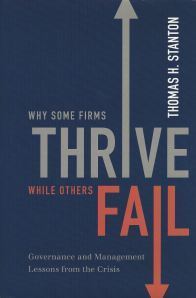Stephen W. Hiemstra's Blog, page 278
November 10, 2014
Nuestro Padre Celestial

Photo by Stephen W. Hiemstra
“`Y al orar, no usen ustedes repeticiones sin sentido, como los Gentiles, porque ellos se imaginan que serán oídos por su palabrería.“Por tanto, no se hagan semejantes a ellos; porque su Padre sabe lo que ustedes necesitan antes que ustedes lo pidan.“Ustedes, pues, oren de esta manera:`Padre nuestro que estás en los cielos, . . .” (Matt 6:7-9 NBH)
Por Stephen W. Hiemstra
La primera frase de el Padre Nuestro es obviamente: “Padre Nuestro”.
Venimos antes Dios como un comunidad bajo un Dios soberano. Llamando Dios como padre centra principalmente en su soberanía,ni su género, de Dios [1]. Dios es un soberano benévolo quien desea intimidad en la relación con sus hijos y hijas. No es un compañero dios ni un dependiente dios quien puede ser manipulado. Por lo contrario, dependemos de Dios para el pan cotidiano—no al revés.
Para padres humano quien no son buen modelos a seguir, escritura nos recuerda que Dios es un padre de los sin padres (Ps 68:5 NBH). La escritura no es sólo “dando vuelta una frase” aquí. Una consecuencia de esclavitud en Egipto y más tarde en Babilonia era ilegitimidad, cual impidió muchas hijos Judío de encontrando sus padres para siempre. La palabra, huérfano, se utiliza en más que cincuenta versículos de la escritura—once veces en el libro de Deuteronomio sólo. Jesús si misma asegura nos: “`No los dejaré huérfanos; vendré a ustedes.” (John 14:18 NBH) El amor de nuestro padre celestial para nosotros, Su hijos y hijas, inspira la amor de nuestros padres humanos, no al revés.
La espiritualidad Cristiana tiene un comunal carácter—no es mi espiritualidad; es nuestra espiritualidad. En bautismo, por ejemplo, se nos presenta a Dios y a la iglesia. En comunión, recordamos nuestro bautismo y celebramos nuestra alianza con Dios y unas con la otra. Podemos disfrutar nuestra soledad con Dios mientras que reconocer el papel vital de nuestra comunidad de fe tiene en fomentar nuestra relación con Dios. A su vez, conocemos Dios mejor como nos amamos unos a otros.
El aspecto comunitario de la intimidad de Dios implica que nuestra espiritualidad no se centra sólo en los sentimientos cálidos y difusos. Nuestra espiritualidad no es la espiritualidad del consumidor. Gran panoramas, música grande, poema grande, arquitectura grande y los grandes logros intelectuales todos apuntan a Dios, pero nuestro espiritualidad es inherentemente relacional. Nosotros somos más propensos a ver el rostro de Dios en los rostros de los que nos rodean.
Las historias y parábolas de Jesús hacen esta punta:
“Por tanto, si estás presentando tu ofrenda en el altar, y allí te acuerdas que tu hermano tiene algo contra ti, deja tu ofrenda allí delante del altar, y ve, reconcíliate primero con tu hermano, y entonces ven y presenta tu ofrenda. (Matt 5:23-24 NBH)
Nuestra identidad espiritual es en un Dios soberano y en relaciones correctas con su pueblo. Los dos están misteriosamente vinculados a.
La doctrina de la Trinidad refuerza esta punta. Cada conversación es tres vías. Siempre tenemos usted, yo, y Dios. Dios es arriba nos, entre nos, y dentro nos. En la transcendencia de Dios, Dios es todopoderoso y en control. En la encarnación de Jesucristo, Dios comparte nuestro dolor y ofrece nos un modelo de papel a seguir. En la presencia del Espíritu Santo, Dios nos consuela y nos guía. Somos en relación con Dios en tres personas. Nuestra identidad se define de forma única y independientemente en relación con cada una de las tres personas de la Trinidad (Miner 2007, 112).
¿Pero, por qué El Padre Nuestro se dirigió al cielo? La repuesta obvia es que el cielo está el domicilio de Dios. Otra respuesta obvia es que el cielo se aclara a cuál padre que orar!
Nota que casi todo las peticiones en El Padre Nuestro se centra en Dios, ni nosotros! ¿Escuchamos para la voz de Dios? ¿Nos acercamos nuestro soberano Dios en la humildad apropiada?
[1] La imagen de Dios como “nuestro” padre hace una declaración acerca de Su carácter. Dios es espíritu; no ser ni hombre ni mujer.
REFERENCIAS
Miner, Maureen. 2007. “Back to the basics in attachment to God: Revisiting theory in light of theology.” Journal of Psychology and Theology, 35(2), 112–22.

November 9, 2014
Prayer Day 2, A Christian Guide to Spirituality By Stephen W. Hiemstra

Available on Amazon.com
Heavenly Father: We praise you for creating heaven and earth; for creating all that is, that was, and that is to come; for creating things seen and unseen. We praise you for sharing yourself in the person of Jesus of Nazareth; our role model in life, redeemer in death, and hope for the future. We praise you for the Holy Spirit, who is ever present with us; who sustains all things; who showers us with spiritual gifts. Open our hearts; illumine our minds; strengthen our hands in your service. In Jesus’ name, Amen.
Padre Celestial, te alabamos para creación de los cielos y de la tierra; para creación de todo que es, que fue, y que sera; para creación de las cosas visibles e invisibles. Te alabamos por compartir ti mismo en la persona de Jesús de Nazaret; nuestro modelo en la vida, redentor en el muerto, y la esperanza para el futuro. Te alabamos por el Espíritu Santo, quien está presente con nosotros que duchar nos con dones espirituales y sustentar todo las cosas. Abierta nuestras corazones, iluminar nuestros mentes, fortalecer nuestros manos en su servicio. En el nombre de Jesús, Amen.


November 7, 2014
What is Your Attitude in Prayer?

Albrecht Durer, 1508
“And he said, Abba, Father, all things are possible for you. Remove this cup from me. Yet not what I will, but what you will.” (Mark 14:36)
By Stephen W. Hiemstra
The Lord’s Prayer radically changed the disciples’ attitudes about prayer.
To understand how much attitudes had to change, think about how a first century Jew would view Jesus’ prayer. In the Lord’s Prayer, we, metaphorically, enter the city of Jerusalem; go through ritual purification to the outer courts of the temple, step into the Holy place, and pull back the veil of the Holy of Holies. Then, at the mercy seat of the Ark of the Covenant, we put on the ephod [1] of the high priest and begin to pray, not to YHWH, but to Daddy! Talk about radical!
If this metaphor for prayer seems far-fetched, consider Paul’s last trip to Jerusalem. Paul arrived in the city in the company of fellow believers (gentiles), probably Greeks from Corinth (1 Cor 16:3). When he entered the temple a riot broke out as Jews who had seen him in the city accused Paul of bringing a gentile into the temple. Paul escaped with his life from this riot only because the Roman guards rescued him (Acts 21:26-32). This story underscores the point that it was unthinkable, to a Jew, that anyone could enter God’s presence—especially in the Temple—without proper cleansing, preparation, and authority.
What is your attitude in prayer? Are you reverent or cavalier in approaching God? Although the temple veil was torn when Christ died on the cross [2], God is still holy and we can approach the mercy seat only by the invitation of Christ. Respecting God’s boundaries is an important step in approaching prayer. “Be holy because I am holy” (Lev 11:44) says the Lord God.
[1] A ceremonial garment worn by the high priest described in Exod 28.
[2] The splitting of the temple veil is recorded in all three of the synoptic Gospels (Matt 27:51; Mark 15:38; and Luke 23:45). Roman armies destroyed the temple during a Jewish uprising in AD 70.


Cuál es Tu Actitud en Oración?

Albrecht Durer, 1508
“Y decía: ¡Abba, Padre! Para ti todas las cosas son posibles; aparta de mí esta copa, pero no sea lo que yo quiero, sino lo que tú quieras.” (Mark 14:36 LBA)
Por Stephen W. Hiemstra
El Padre Nuestro cambió radicalmente la actitud de los discípulos sobre oración.
Para entender lo mucho que tuvieron que cambiar las actitudes, piense sobre un Judío del siglo uno y cómo vería la oración de Jesús. En El Padre Nuestro, entramos metafóricamente la ciudad de Jerusalén; pasar entre purificación ritual a los patios exteriores del templo, el paso hacia el lugar santo, y tire hacia atrás el velo del Santo de los Santos. Luego, en el propiciatorio del el Arca del Testimonio, que ponemos en el efod [1], del Sumo Sacerdote y inicia a orar, no a YHWH, sino a papá! Simplemente radical!
Si esta metafórica para oración parece descabellada, considera la viaje última de Pablo a Jerusalén. Pablo llegó en la ciudad en la compañía de otras creyentes (gentiles) probablemente Griegos de Corinto (1 Cor 16:3). Cuando él entró el templo, el empiezo un antidisturbio como unos Judíos quien lo han visto en la ciudad acusó que traer un gentil hacia el templo. Pablo escapó de esta lucha con su vida solamente porque la guardia Romana se lo rescataron (Acts 21:26-32). Esta historia subrayo la punta que era impensable a un Judío que cualquiera persona podría entrar la presencia de Dios—sobre todo en el templo—sino limpieza apropiada, la preparación, y la autoridad.
¿Cuál es tu actitud en oración? ¿Eres reverente o desdeñoso en acercando a Dios? Aunque el vel del templo se rasgó cuando Cristo murió en la cruz [2], Dios es todavía santo y nosotros podamos acercar al propiciatorio sólo por la invitación de Cristo. Al respectando las limitaciones de Dios es un etapa importante en acercando oración. “sean santos, porque Yo soy santo” (Lev 11:44 NBH) dice el Señor Todopoderoso.
[1] Unas prendas ceremoniales usadas por el sumo sacerdote describo en Éxodo 28.
[2] La división del velo del templo se registra en los tres evangélicos sinópticos (Matt 27:51, Mark 15:38 y Luke 23:45). Ejércitos romanos destruyeron el templo durante una revuelta judía en el año 70.

November 6, 2014
Live Radio Interview Today on Life Issues Show with Lloyd Rosen

Available on Amazon.com
This afternoon I will be guess on the Life Issues Radio Show with host, Lloyd Rosen.
I will be talking about my book, A Christian Guide to Spirituality.
The interview is from 2:00 p.m. to 2:30 p.m. Central Standard Time (3:00 p.m. Eastern Standard Time).
Listen online at: http://www.LifesIssuesWithLloydRosen.com.
The Life Issues Radio Show appears on the Tough Talk Radio Network which comes to us from Katy, Texas.
Lloyd Rosen is the author of a book himself, Search for Happiness: My Journey from Darkness into the Light
(ISBN: 9781434368706: Amazon.com), which chronicles his struggle with depression.


November 5, 2014
Everlasting Life

New Life
By Stephen W. Hiemstra
What is eternal life?
Our life in Christ is a journey which begins sinful and finite, but progresses towards holy and eternal. The progress towards eternal life requires both spiritual restoration and bodily healing.
We normally think of God’s eternal nature before his holiness. This first aspect of eternal life is quantitative—overcoming death to live eternally with God. However, this line of thinking is backwards: death is the penalty for sin. In other words, sin causes death. God’s forgiveness in Christ removes the sin, removes the penalty of death, and makes eternal life possible.
Unfortunately, sin not only triggers a death penalty; it pollutes us and damages our relationships. For example, the Apostle Paul’s conversion included God’s forgiveness, but Paul’s ravaging of the church was not easily forgotten (Acts 8:2). Likewise, the murderer who is forgiven has his guilt removed, but the life taken has not been restored and his broken relationships remain broken.
Consequently, the second aspect of eternal life is qualitative—removing sin’s pollution and reconciling our relationships through Christ. The Apostle John writes: “this is eternal life that they may know you the one, true God and the one who you sent, Jesus Christ.” (John 17:3; my translation). We are a new creation in Christ and reconciled to Him, but reconciliation has two parts. The first part is reconciliation with God and it is completed with the work of Christ. The second part is reconciliation with brothers and sisters against whom we sinned (2 Cor 5:17-20). This final stage in reconciliation, which can only be completed with and through the power of the Holy Spirit, requires both sanctification of the individual and participation of the church. This is also area where the spiritual disciplines can focus most productively.
Eternal life, accordingly, begins with the work of Christ (justification and reconciliation with God), but continues in the work of the church (reconciliation with those we have sinned against). The Good News is that in Christ and through the Holy Spirit God’s work in us will be complete.
[1] Because of original sin, we are cut off from God at birth by sin and destined to die because of sin’s penalty—death. In Christ, we see the image of a holy and eternal God. Christ both affects our moral improvement (sinful to holy) and bodily healing (mortal to immortal)..
[2] John 3:36; Rom 10:9-10.

La Vida Eterna

New Life
Por Stephen W. Hiemstra
¿Cual es la vida eterna?
Nuestra vida en Cristo es un viaje que empieza pecaminosa y finito, pero progresa hacia santo y eterna. El progreso hacia la vida eterna requiere ambos restauración espiritual y la sanación de la cuerpo.
Pensamos normalmente de la naturaleza eterna de Dios antes su santidad. Este aspecto primero de la vida eterna es cuantitativa–superación de la muerte a vivir eternamente con Dios. Sin embargo, la correcta linea de pensamiento es al revés: la muerte es la pena para los pecados. En otras palabras, los pecados causan la muerte. El perdón de Dios en Jesucristo quita el pecado, elimina la pena de muerte, y hace la vida eterna posible.
Por desgracia, los pecados no solo inicia una pena de muerte; se contamina a nos y daña nuestras relaciones. Por ejemplo, la conversión del Apóstol Pablo incluyó el perdón de Dios, sino saqueo de la iglesia no fue fácilmente olvido (Acts 8:2). Del mismo modo, el asesino quien se le perdona ha a su culpabilidad removido, pero la vida tomada no ha sido restaurada y sus relaciones rotas permanecerá roto.
Consecuentemente, el aspecto segundo de la vida eterna es cualitativa—a remover la contaminación de los pecados y reconciliar de nuestras relaciones a través de Cristo. El Apóstol Juan escrita: “`Y ésta es la vida eterna: que Te conozcan a Ti, el único Dios verdadero, y a Jesucristo, a quien has enviado.” (John 17:3 NBH) Estamos una nueva creación en Cristo y reconciliado a él, pero la reconciliación tiene dos partes. La primera parte es reconciliación con Dios y esta completo con la obra de Cristo. La segunda parte es reconciliación con hermanos y hermanas contra quien hemos pecado (2 Cor 5:17-20). Esta etapa final en reconciliación, que puede ser completo con y a través del poder del Espíritu Santo, requiere ambos la santificación de la persona y la participación de la iglesia. Este es un área donde las disciplinas espiritual puede productivamente la mayoría enfoque.
La vida eterna, en consecuencia, se inicia con la obra de Cristo (justificación y reconciliación con Dios), pero continua en la obra de la iglesia (reconciliación con ellos contra quien hemos pecado). Las Buenas Noticias es que en Cristo y a través del Espíritu Santo la obra de Dios en nosotros será ser completa.
[1] Por razón de pecados, estamos separados de Dios en nacimientos y somos destinado a morir por causa de la pena de los pecados—la muerte. En Cristo, vemos la imagen de un Dios santo y eterna. Cristo afecta ambos nuestra mejora moral (pecaminosa a santo) y la sanidad del cuerpo (mortal a inmoral).
[2] John 3:36; Rom 10:9-10.

November 3, 2014
Stanton: Creating Constructive Dialogue is the Key Management Skill
 Thomas H. Stanton. 2012. Why Some Firms Thrive While Others Fail: Governance and Management Lessons from the Crisis. New York: Oxford University Press.
Thomas H. Stanton. 2012. Why Some Firms Thrive While Others Fail: Governance and Management Lessons from the Crisis. New York: Oxford University Press.
Review by Stephen W. Hiemstra
When my kids were young, I taught them that there are 3 kinds of people in this world:
People who never learn;
People who learn from their own mistakes; and
People who learn from other people’s mistakes.
The point is to become someone capable of learning from other people’s mistakes. Learning behavior determines personal success; it also determines the success of firms.
Thomas Stanton’s book, Why Some Firms Thrive While Others Fail, examines firm learning behavior in the context of financial stress: the Great Recession. He is in a position to know a lot about this subject both because of his long tenure in financial law practice in Washington and because he served as a researcher on the Financial Crisis Inquiry Commission in 2010-2011, a commission established by Congress. As a researcher, he personally interviewed many of the major players in the financial crisis and the federal regulators.
Stanton is an attorney by trade with the mind of an economist. He is well-known among Washington insiders, especially in finance, and his book, A State of Risk , led Congress to create a new federal agency, the Office of Federal Housing Enterprise Oversight (OFHEO) , where I worked during my last 7 years of federal service until I retired at yearend 2010. Tom and I have known each other since the 1980s when I worked on Farmer Mac legislation and supervision . Tom graciously gave me a copy of this book knowing that I would eagerly read it and write about it.
Stanton writes Why Some Firms Thrive While Others Fail in 10 chapters, including:
Repairing Our Public and Private Institutions: A National Imperative;
Dynamics of the Financial Crisis;
Coping with the Crisis;
Company Governance and the Financial Crisis;
Risk Management and the Financial Crisis;
Company Organization, Business Models, and the Crisis;
Supervision and Regulation of Financial Firms;
Hyman Minsky: Will It Happen Again?
Governance and Management: Lessons Learned; and
Governance and Management: Beyond the Financial Crisis (v).
These chapters are preceded by a preface and acknowledgments and followed by a Table of Acronyms, Notes, References, and an Index.
An important theme in the Great Recession, as reflected in the book, is the need to link and understand intimately highly technical knowledge of financial markets, financial instruments, firm operations, and modeling to firm risk management and business objectives. The image of a Fortune-500 CEO who wanders the halls having substantive conversations with staff throughout the organization captures this dynamic. Stanton highlights this hands-on, engaging management style in his concept of constructive dialogue.
Stanton writes:
One of the critical distinctive factors between successful and unsuccessful firms in the crisis was their application of what this book calls “constructive dialogue.” Successful firms managed to create productive and constructive tension between (1) those who wanted to do deals, or offer certain financial products and services, and (2) those in the firm who were responsible for limited risk exposure (10).
The importance of quality dialog within the firm or government agency arises from the simple observation that no single individual, no matter how bright or experienced, could understand the totality of the highly technical financial environment that now exists. Having an open-minded executive is accordingly insufficient; the firm culture must embrace active learning and open communication.
Stanton’s has an interesting blend of wide scope and technical depth within its subject-matter: governance and management. Four firms who succeeded received the majority of his attention: JPMorgan, Goldman Sachs, Wells Fargo, and TD Bank. Stanton makes the case that these firms survived because of operational competence and intelligent discipline (43). In other words they maintained disciplined risk taking, combined good judgment with good information, and had good communication (54-55). Failing firms (Fannie Mae, Freddie Mac, Bear, Lehman, Merrill, Countrywide, WaMu, IndyMac…) failed for different reasons, including focus on short-term growth, ineffective data systems, weak capacity to answer simple questions, and lack of effective communication (57-66).
Stanton’s Why Some Firms Thrive While Others Fail should be of keen interest to financial policy makers and bank supervisors who deal with large institutions. Because the federal agencies have mostly shied away from writing studies of what went wrong in the Great Recession (unlike earlier crises ), this book functions as a quasi-official study of the Great Recession. For the reader interested in enterprise risk management, his contribution consists of a series of case studies of important firms that both succeeded and failed. For students of organizational behavior this book should be required reading.
A State Of Risk: Will Government Sponsored Enterprises Be The Next Financial Crisis? (New York: HarperCollins Publishers, 1991)
OFHEO was created by Federal Housing Enterprises Financial Safety and Soundness Act of 1992 and folded into the Federal Housing Finance Agency (FHFA) in 2008 by the Housing and Economic Recovery Act.
I studied and wrote about the Federal Agricultural Mortgage Corporation (Farmer Mac) as a researcher in the Economic Research Service, USDA and later took a role in Farmer Mac supervision as a financial economist at the Farm Credit Administration (FCA) responsible for Farmer Mac regulation and supervision.
November 2, 2014
Prayer Day 1, A Christian Guide to Spirituality By Stephen W. Hiemstra

Available on Amazon.com
Almighty Father: thank you for the person of Jesus of Nazareth; who lived as a role model for sinners; who died as a ransom for sin; and whose resurrection gives us the hope of salvation. In the power of your Holy Spirit, inspire the words written and illumine the words read. In the name of the Father, the Son, and the Holy Spirit. Amen.
Padre Todopoderoso, gracias por la persona de Jesús de Nazaret, quien vivió como un modelo a seguir por los pecadores, quien murió como un rescate por los pecados y cuya resurrección da nos la esperanza de salvación. En el poder de Tu Espíritu Santo, inspire las palabras escritas y iluminar las palabras leídas, En el nombre de Jesús, Amen.

October 31, 2014
Forgiveness of Sins

Photo by Stephen W. Hiemstra
By Stephen W. Hiemstra
Why is forgiveness a sign of God’s presence?
Scripture attests to God’s overwhelming love for us and willingness to forgive our sins. Even after God discovers the sin of Adam and Eve, he does not immediately impose a death sentence on them, as previously warned; instead, he outfits them with clothes like a mother preparing her first grader for school Gen 2:17; Gen 3:21. God imposed a consequence for sin on Adam and Eve, but also left them with a “positive conclusion” so that they might learn from their mistake and not be embittered (Turansky and Miller (2013, 130–131).. Similarly after Cain murders Abel, God offers Cain grace, protecting him from revenge (Gen 4:15).
The link between God’s love and forgiveness allows the psalmist to write:
Bless the LORD, O my soul, and forget not all his benefits, who forgives all your iniquity, who heals all your diseases, who redeems your life from the pit, who crowns you with steadfast love and mercy. (Ps 103:2-4)
So if God’s forgiveness was already well-attested in the Old Testament, why did Jesus need to die on the cross?
Part of the answer is to observe that God’s forgiveness of Adam, Eve, and Cain was providentially incomplete. All three were still cursed; all three still left the presence of God. Christ’s work on the cross was comprehensive, a re-creation event, as the Apostle Paul writes:
Therefore, if anyone is in Christ, he is a new creation. The old has passed away; behold, the new has come. All this is from God, who through Christ reconciled us to himself and gave us the ministry of reconciliation; that is, in Christ God was reconciling the world to himself, not counting their trespasses against them, and entrusting to us the message of reconciliation. (2 Cor 5:17-19)
Christ reconciled us with God so we should reconcile with one another. With Adam, Eve, and Cain, none of this happens.
Some psychologists look at forgiveness as a reframing event. Reframing occurs when new meaning is attached to a negative experience. For example, psychoanalyst Victor Frankl, when confined to a concentration camp during the Second World War, focused his mind on preparing the lectures that he would give after the war on his camp experience. In reframing his persecution, Frankl was able to survive the camp when others gave up hope and died (Rosen 1982, 141). Reframing falls short of forgiveness because it focuses solely on the individual, neglecting the relationship among individuals and with God.
When God forgives our sin, in a sense we reframe our self-image from rebel to child of God. The greater the sin forgiven, the deeper the transformation enabled. Forgiveness releases us from death row condemnation and allows us to be reconciled with God, those we sin against, and all of creation. When we then forgive others, we become ambassadors for Christ in this magnificent reconciliation project (2 Cor 5:20).
REFERENCES
Rosen, Sidney [Editor]. 1982. My Voice will Go With You: The Teaching Tales of Milton H. Erickson. New York: W.W. Norton and Company.
Turansky, Scott and Joanne Miller. 2013. The Christian Parenting Handbook: 50 Heart-Based Strategies for All the Stages of Your Child’s Life. Nashville: Thomas Nelson.






